| Umělec magazine 2010/2 >> Farewell Arcadia the work of Ged Quinn | List of all editions. | ||||||||||||
|
|||||||||||||
Farewell Arcadia the work of Ged QuinnUmělec magazine 2010/201.02.2010 Jane Neal | The End of the Western Concept | en cs de ru |
|||||||||||||
|
Paradise Lost: Man forever separated from the heaven on earth his creator provided for him. We know what comes next: shame, enmity, exile in an unforgiving wilderness and fratricide. Over time, Man’s family has endured flood, famine, war, captivity and tyranny. Whether we’re religiously inclined or not, the story of the Expulsion from Eden and its consequences resonates deeply within the Western psyche. All is not right with the world, and paradise, if indeed it once reigned here, is long gone; a vague, or at times acute awareness of which, has permeated through our collective unconscious.
Throughout history, man has been preoccupied by the nature of his existence and his relationship with the world around him; what it means to be, why and how he came into being, and where he may or may not be going. Existence itself is a fragile state of affairs, perhaps better understood in the context of the nature of the word itself. Derived from the original Latin, “existere,” in a literal translation means, “to stand out.” Man, it could be said, exists in a state of distance from the world yet, paradoxically, he remains within it. This status quo allows him to project meaning and order onto his surroundings and the world at large, but it is threatened by events such as personal tragedy, natural disaster, war or terrorism—in short by anything that introduces the possibility that life is arbitrary and Man might not, after all, be special. Faced with the possibility that, “Everything is meaningless,” (Ecclesiastes, ch 12, v 8) and that actually life has no point to it at all, Man breaks down and suffers what has come to be known as an “existential crisis.” Yet according to one of the 20th Century’s most famous existentialists, Jean Paul Sartre (1905—1980), “Man is nothing else but what he makes of himself. That is the first principle of existentialism.” As far as Sartre was concerned, it was possible to be free from angst if Man accepted that he has the power to define his own sense of being, and to exercise the right to determine what he is. However, should he allow anything outside himself to exert influence over his sense of self; he risks the freedom he so desperately desires. Therefore, says Sartre, “It is senseless to think of complaining since nothing foreign has decided what we feel, what we live, or what we are. Furthermore this absolute responsibility is not resignation: it is simply the logical requirement of the consequences of our freedom.” Sartre though, was a man of contradiction and his plaintive cry, uttered amidst the horrors and confusion that punctuated the 20th Century, “That God does not exist, I cannot deny. That my whole being cries out for God I cannot forget,” is deeply affecting. In John Milton’s (1608—1674) Paradise Lost, Satan also appears to be an existentialist, at least he seems to have an existential view of damnation, “Better to reign in Hell than to serve in Heaven,” he quips, though it would seem that this attitude offers him little comfort when faced with the reality of his situation; the heart of the problem being no matter what he does, and the havoc he wreaks, he can never forget the true happiness he experienced in paradise, and this continues to plague him. Even while plotting to corrupt creation, Satan wrestles with the impossible longing of returning to heaven. In the garden he cries, “The more I see pleasures about me, so much more I feel torment within me.” John Milton wrote his epic work in a house that features as the subject of the British artist, Ged Quinn. In this painting titled The Happy Garden (2003-4), the meticulously rendered piece (Quinn’s obsessive attention to detail is typical of his work) depicts 17th Century formal gardens surrounding a charming house. On closer inspection, this pastoral idyll is not what it seems (a recurrent motif of the painter’s work); the gardens are laid out to recreate the herpes, HIV and syphilis viruses, and in the middle of a little track that works its way to the forest, there sits a tiny recreation of Spandau prison, (infamous as the Nazi prison, and destroyed to prevent it becoming a neo-Nazi shrine after the death of its last and most infamous inmate, Rudolph Hess). Of late, Quinn’s work has become peopled with dictators and their evil henchmen; sinister portraits that are often weird, hybrid composites of forms. One of the strangest is Country Girl (2010), the title of which was borrowed from John Cale’s song Magritte—a clue perhaps to the surreal qualities that find their way into so many Quinn paintings, engendering a strangely dream-like effect. The classic three-quarters turned portrait format features an instantly recognizable Hitler, but not as we know him. He has been given the Gainsborough treatment, set against a pastoral landscape and transformed into a little girl in a bodiced dress although she still possesses Hitler’s features and characteristic moustache. Beria, Stalin’s Chief of Police has gained a black eye and his uniform has been slashed to reveal a womanly breast. In Quinn’s hands, figures of hate such as these are reduced to objects of ridicule. Still they manage to evoke a shiver in us, perhaps because they play into the territory of the uncanny, the mutilated or amalgamated forms toying with our received notions of whom and what equals ‘good’ or ‘bad’, ‘aggressor’ or ‘victim’. Though Quinn’s portraits might be unconventional, in many ways he adheres to the constraints imposed by Western academic tradition in the 18th Century. Joshua Reynolds (1723—1792), first president of the Royal Academy (RA), London, was a leading proponent of the ‘Grand Style’, delivering in his Discourses the assertion that artists should veer away from focusing their attention on the particular and individual qualities of sitter or situation and instead seek to idealize their surroundings. Thus, rather than focusing on accidents of nature, artists could use their imagination to transform that which might be considered ordinary, into something sublime. Reynolds divided painting into three areas: history painting, landscape and portraiture. There was no question as to which of the three held the noblest position in his eyes: history painting was the highest form as it dealt with, “man in general,” and required the artist to bring his imagination to the fore. It’s possible to apply the canon as prescribed by Reynolds to Quinn’s work. Though he moves across the three disciplines (and also into still life as two examples of his recreations of 17th Century Dutch-style flower paintings: Camp 2003-4, and No One Here has Heard of You 2004-7, attest), it is his ability to impose his powerful imagination onto the landscapes and portraits that he paints that imbues his works with the compelling qualities he is becoming recognized for. Following Reynolds’ logic, the work is duly elevated from the ordinary into the remarkable. Reynolds, his contemporary, Thomas Gainsborough (c 1727—1788) and 17th Century landscape painter, Claude Lorrain (1600—1682), have all lent inspiration to Quinn or, more truthfully, he has purloined their creations for his own ends. True Peace Will Prevail under the Rule (2004) takes as its starting point Claude Lorrain’s depiction of the Old Testament story of Jacob, Rachael and Leah at the well. In Quinn’s work though, this Arcadian idyll is not at all what it seems. The painting features a depiction of Mount Carmel, home to a dissident community that was destroyed by the FBI in the Texan town of Waco in 1993. The incongruence of this juxtaposition is typical of Quinn. In addition, his works are consistently laced with signs and symbols, and with political, philosophical, art historical, religious and literary references. In the above example, Quinn introduces the image of a pre-Copernican universe, suspending it over his depiction of the town. The Pre-Raphaelites, German Romantic painters and the American Hudson Valley School are also favorite hunting grounds for the artist. I am an Ear of Corn in Sun and Wind (2010), derives its background from a work by the English born, American based painter, Thomas Cole (who founded the Hudson Valley School of Painting). Within this work there are references to the sculpture of Arno Breker (best known for his public works in Nazi Germany), and a Baselitz has been reconstructed in the broken doorway of a cottage that is clearly in a state of disrepair. Quinn’s work is seductive. The heavenly skies and romantic forests of his paintings are the stuff dreams are made of. We wander between recreations of Casper David Friedrich’s (1774—1840) black forests and the meticulously observed woodland scenes of John Everett Millais (1829—1896). It’s not until we’re fully immersed in the dream that Arcadia begins to make us uneasy; only then do we see the signs of decay and symbols of horror, not to mention the references to popular culture that are scattered, graffiti-like, across his paintings. The Fall (2006) depicts the feathered form of poet and dramatist Antonin Arnaud hurtling from a sky lifted from Claude Lorrain’s Landscape with Abraham Expelling Hagar (1668). As Arnaud plummets towards the burned-out wreck of a building we are reminded of Lucifer’s dramatic fall from grace, as God’s most beautiful angel is banished from Heaven. The shell of a building turns out to be Thomas Edison’s Black Maria (the world’s first purpose-built production studio). Quinn overlaps art historical masterpieces with disparate references, drawing all together in his particular, meticulous fashion. The effect is entrancing, but paradoxically repellent and we might do well to wonder if we’re being mocked, as nothing is what it seems and truth and beauty appear to be deceiving us. We start to lean towards outrage, but even as we do, the moment we feast our eyes on the beauty of the next grand vista Quinn has prepared for us, we’re seduced again. Quinn isn’t alone in exploring what are considered to be the traditional tropes of academic painting: biblical and classical subjects, landscape, portraiture and the still life. Perhaps the most obvious contemporary companions for Quinn are UK painters, Nigel Cooke, Glenn Brown and Justin Mortimer. From Cooke’s poisonous, dystopian landscapes through Brown’s fine brushed re-workings of iconic pieces from art history (so lush they often more resemble ice cream than paint), to Mortimer’s abject visions of achingly beautiful landscapes violated with stomach-churning horrors, we find resonance with Quinn’s works. Yet Quinn also sits comfortably among the Leipzig painters and with the young Romanian artists Adrian Ghenie (who took the Flight into Egypt as the title and inspiration for the subject matter of his last solo exhibition in Germany), and Serban Savu (whose windows into the lives of contemporary Romanians post transition have drawn comparisons with America’s Edward Hopper). So called ‘traditional’ painting has found its place again in the contemporary art world, though not without the sense—not least amongst its proponents—of a struggle. Pre 2000, it was certainly difficult for artists to be taken seriously in the international art scene if their practice was defined as “straight, technically proficient painting.” Their ‘way in’ nearly always had to involve the employment of some kind of conceptual ‘device’. Without this conceptual affirmation that confirmed a knowledge and recognition of the legacies of Dada, Duchamp, and Postmodernism, the artist risked being labeled anachronistic; a ‘Sunday painter’ who dared to prefer craft over concept and pseudo-scientific reductionism. How exactly figurative painting found its way back into the proverbial fold of the contemporary art world is difficult to determine in any precise way, but it coincided with the dawning of the 21st Century. History shows us that as each generation strives to make its mark, it rebels most strongly against the generation that just preceded it and seeks to find a philosophy from a previous era to identify with. Thus with new worries concerning the impact of global warming, globalization, terrorism and world financial instability looming large, it could be argued that many artists sought to identify themselves with an historical medium as opposed to the new media that had so captivated artists and art students in the 1990s. Perhaps this was because of a growing mistrust of the idea that technological ‘improvement’ equaled progress, or maybe for some the choice was natural and unselfconscious. For many artists though, the decision to commit to painting was deliberate, even provocative. The fall of the Berlin wall in 1989 and the removal of the ‘Iron Curtain’ allowed the Western contemporary art scene to see what had been happening in the art schools and studios of their Eastern peers. Somewhat ironically it became apparent that while the majority of art schools in the West had chosen to reject the Western academic tradition in favor of conceptualism, the Eastern academies had retained it. Along came the Leipzig school headed by Neo Rauch, closely followed by a generation of young Polish artists. Museum curators and collectors first became curious, then convinced of the artists’ validity. Concurrently, the international commercial galley scene exploded and art fairs proliferated. Painting, historically always the most commercially viable of mediums, was starting to find its way into museums and important collections. How aware artists such as Quinn were of these artists’ works in the 1990s is perhaps not as significant as the reintroduction of figurative painting into the market structure signaling the beginnings of a revised interest in, and acceptance of ‘traditional-style’ painting. It was no longer considered an outmoded art form by the ‘tastemakers’ of the art world, and the ‘craft’ of painting, which had been subordinated, if not derided in Western art schools in favor of conceptualism for 40 years, was again welcomed (albeit cautiously at first), as something to be admired, though not at the expense of challenging subject matter: if a painter was to be credible he had to bring something new to the table. Ged Quinn is such an artist. Yet while he may be working within a ‘traditional’ framework, he is not concerned with replicating painterly techniques. Quinn is adept at making a painting resemble an earlier masterpiece, but his own ‘craft’ is not so finely tuned; his brushwork often flat and lacking expression. Quinn himself doesn’t appear to mind this, as is evident from how he sources his images. He doesn’t make pilgrimages to galleries and museums to spend hours admiring the hand of a master, instead he finds his subjects in books, taking in the flat color plates, perhaps even sourcing images from the internet—an activity prevalent among artists working today. Quinn then is adept at ‘special effects’, sliding in his mélange of references over the Arcadian sets he first mocks up. The references sometimes jar with their surroundings and feel a little forced, as with The Limitations of Narcissism (2007), where the broken down shed has been shoe-horned in, but mostly, and this is greatly reinforced by the cinematic scale Quinn chooses for the majority of his paintings, the viewer goes away awed. Quinn makes each vista so convincing that, as with cinema, we suspend the laws that govern reality and accept each scene as utterly plausible despite all the different painting languages he has in play at the same time. Once he has us in this mindset, Quinn can have some fun with us. In the expansive sets he creates he can muddle pop with religion, politics with literature in a manner that would be nonsensical if all the strands were detangled and laid out for us to deconstruct piece by piece. Here is where painting comes into its own. Its plastic nature means it doesn’t have to be reduced to one particular language, or speed. It can be returned to, again and again if necessary, with some parts of a work slow to process, others arriving with an instant impact. Quinn plays with our subconscious, introducing surreal notes and observations that disrupt the surface, rhythm and sensibility of his work. Before the Rain the Grass is Longer (2008) features a hippy-esque camper van surrounded by a psychedelic, exposed reef. The painting has been compared with Max Ernst’s Europe After the Rain (1940-42), although in contrast with Ernst’s work, and in common with the majority of Quinn’s pieces, the background he chooses is serene and reminiscent of the Venetian school. It is the juxtaposition of the pastoral with the symbols of 1970s hippy culture and toxic coral that make us want to resolve the meaning behind the work. A clue can be gleaned from Quinn’s original title: Heaven is the Real World, Jesus is the Way. The artist appears to be suggesting that humanity has an inherent dissatisfaction with the world; resulting in him either convincing himself that there is a perfect version beyond this life, or attempting to find ways to bring paradise forward by re-introducing it on earth. The cycle that plays itself out in Quinn’s work has Man as the protagonist, but like all heroes, he has a fatal flaw. He longs for paradise and in his longing has created many great things but his tragedy is that each time he finds the possibility of a new way back; he corrupts it and re-imposes himself in the wilderness, if not in a new kind of hell. We are reminded again of Milton, “And out o' good still to finds means of evil.” History leads us to understand Man will always fail in his attempts, but human nature and Quinn’s paintings show us he will never stop trying.
01.02.2010
Recommended articles
|
|||||||||||||
|
04.02.2020 10:17
Letošní 50. ročník Art Basel přilákal celkem 93 000 návštěvníků a sběratelů z 80 zemí světa. 290 prémiových galerií představilo umělecká díla od počátku 20. století až po současnost. Hlavní sektor přehlídky, tradičně v prvním patře výstavního prostoru, představil 232 předních galerií z celého světa nabízející umění nejvyšší kvality. Veletrh ukázal vzestupný trend prodeje prostřednictvím galerií jak soukromým sbírkám, tak i institucím. Kromě hlavního veletrhu stály za návštěvu i ty přidružené: Volta, Liste a Photo Basel, k tomu doprovodné programy a výstavy v místních institucích, které kvalitou daleko přesahují hranice města tj. Kunsthalle Basel, Kunstmuseum, Tinguely muzeum nebo Fondation Beyeler.
|































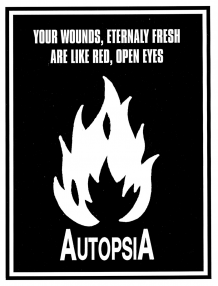




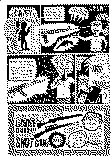
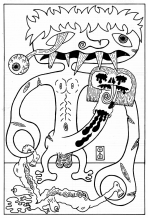
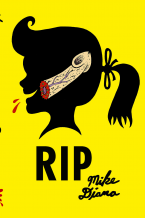
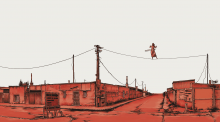


 New book by I.M.Jirous in English at our online bookshop.
New book by I.M.Jirous in English at our online bookshop.
Comments
There are currently no comments.Add new comment